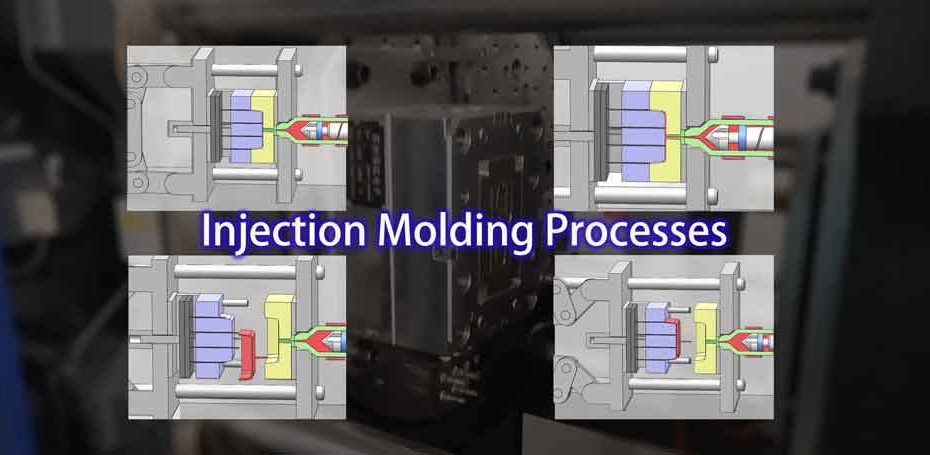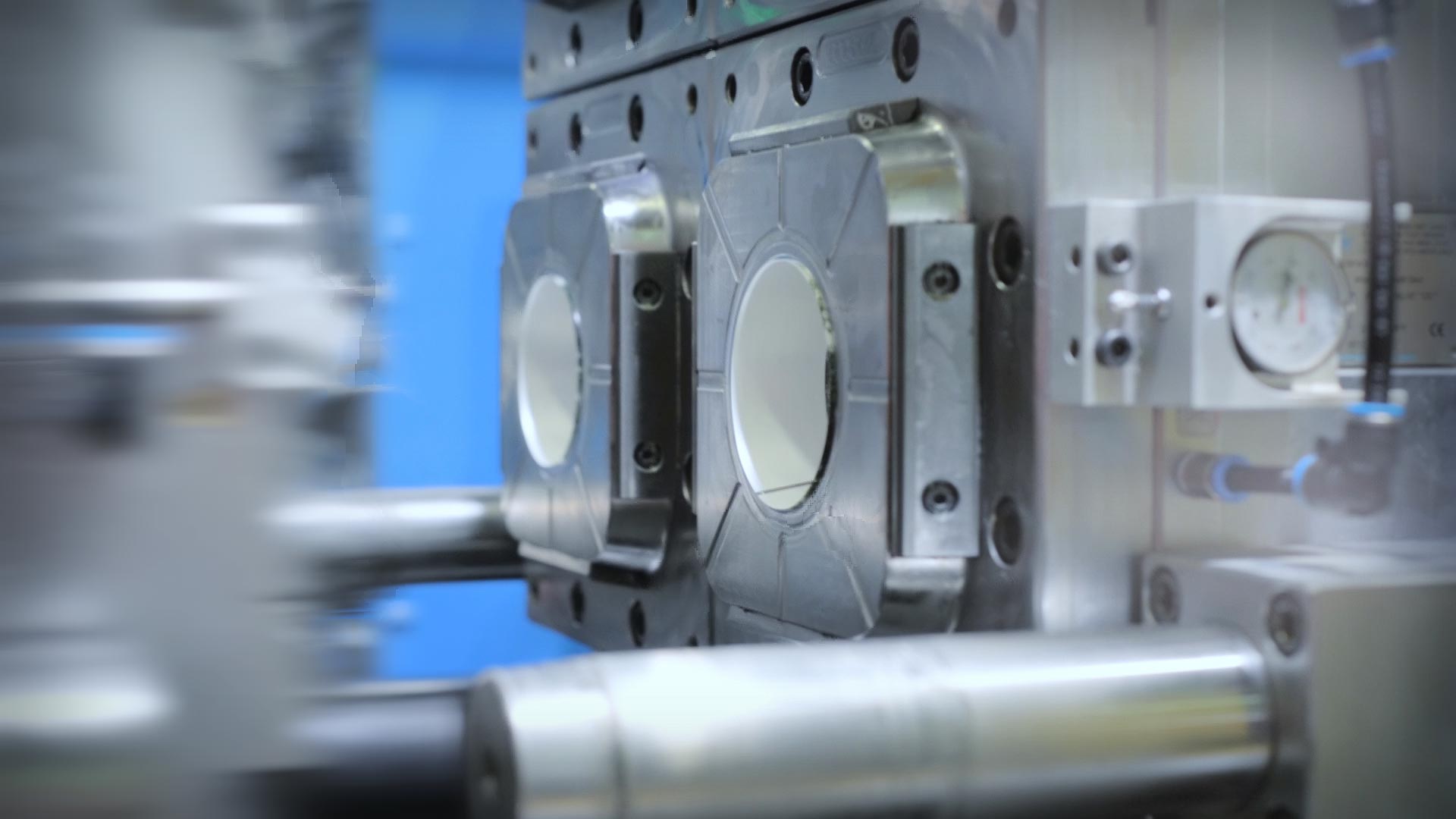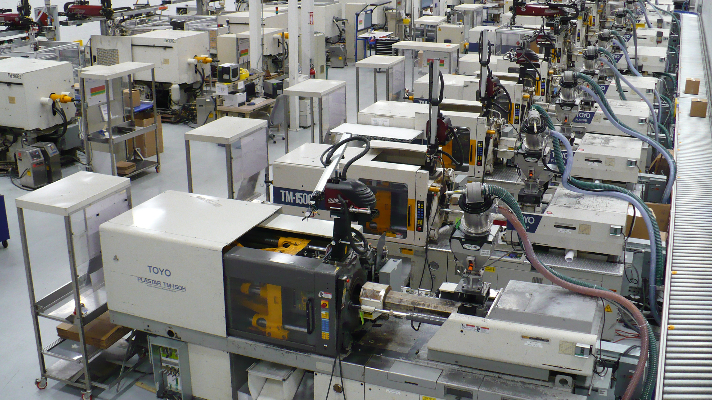The Effect of Plastic Injection Molding on Decreasing Production Costs and Waste
The Effect of Plastic Injection Molding on Decreasing Production Costs and Waste
Blog Article
Comprehending the Basics of Plastic Shot Molding Procedures
Plastic injection molding works as a foundation of modern production, giving a methodical technique to generating complex elements with precision. This procedure not just encompasses the fundamental steps of melting and injecting products right into mold and mildews but also entails a nuanced understanding of different affecting variables, such as temperature and pressure. As industries progressively require effectiveness and top quality, the details of this methodology become more vital. Checking out these necessary components can disclose just how even small modifications can cause substantial improvements in production outcomes, raising questions about the potential for innovation in this established process.
What Is Plastic Shot Molding?
Plastic injection molding is an extensively made use of manufacturing process that changes thermoplastic and thermosetting materials into precise and complicated forms. This method is preferred for its ability to generate high quantities of similar components with outstanding accuracy, making it a crucial technique in numerous industries, including auto, durable goods, and clinical tools.
The process includes thawing the picked plastic material and injecting it into a mold and mildew under high stress. The mold, created to the requirements of the desired part, enables the liquified plastic to materialize as it cools and strengthens. As soon as the material has solidified, the mold and mildew is opened up, and the ended up component is ejected.
Plastic injection molding provides a number of benefits, consisting of reduced waste, consistency in production, and the capability to integrate complex layouts that may be testing with other making methods. Additionally, it supports a broad series of products, each supplying one-of-a-kind residential properties that can be customized for details applications. As sectors proceed to introduce, plastic shot molding continues to be at the center, making it possible for the advancement of innovative items that satisfy progressing customer demands.
The Injection Molding Process
The injection molding procedure is an innovative strategy that includes a number of essential phases to create premium plastic elements. Plastic pellets are fed right into a heated barrel where they are thawed into a viscous fluid. This molten plastic is after that injected under high stress into a precision-engineered mold, which forms the product into the wanted type.
Once the mold and mildew is filled up, the plastic is allowed to solidify and cool down, taking the form of the mold dental caries. Air conditioning time is essential, as it affects the cycle time and the final properties of the molded part. After sufficient cooling, the mold and mildew opens, and the finished element is expelled utilizing ejector pins.

Materials Used in Shot Molding
Numerous materials can be utilized in the shot molding procedure, each offering special residential or commercial properties that deal with details applications. The most commonly used products consist of thermoplastics, thermosetting plastics, and elastomers.

Thermosetting plastics, like epoxy and phenolic resins, go through a chemical modification throughout the curing process, resulting in an inflexible, stringent structure. These materials are ideal for applications requiring high warm resistance and structural stability, often made use of in electrical insulators and automobile parts.
Elastomers, consisting of silicone and rubber-based products, give adaptability and durability. Their visit this site unique homes make them suitable for applications that require elasticity, such as seals and gaskets.
Furthermore, specialty materials like bio-based plastics and composites are gaining grip for their ecological advantages and improved efficiency attributes, widening the scope of injection molding applications in different industries. Understanding the homes of these materials is vital for choosing the proper type for specific projects.
Benefits of Injection Molding
Injection molding stands apart as a highly reliable manufacturing process that provides countless advantages for creating complicated get rid of accuracy. Among the most considerable benefits is the ability to create complex designs that would certainly be impossible or tough to accomplish with other techniques (Plastic Injection Molding). The process permits for tight tolerances and detailed features, making sure top quality elements
In addition, injection molding is recognized for its rapid production capabilities, making it an optimal selection for high-volume manufacturing. Once the mold is developed, parts can be created promptly, minimizing preparations and raising overall performance. This performance not just lowers manufacturing costs yet also provides an one-upmanship in the marketplace.
The flexibility of products made use of in shot molding additionally boosts its allure. A broad variety of thermoplastics and thermosetting polymers can be used, enabling makers to pick products that ideal fulfill their details needs, consisting of warmth, stamina, and adaptability resistance.
Additionally, the procedure decreases waste, as excess material can often be reused and recycled. This sustainability element adds to a reduced environmental impact, making shot molding a liable production choice. In general, the benefits of injection molding make it a favored technique for numerous industries.
Elements Influencing Item Top Quality
While various aspects can influence item top quality in shot molding, recognizing these aspects is essential for attaining optimal outcomes. Key facets include material choice, processing specifications, and mold and mildew layout.
Material selection plays a vital role, as various polymers show special residential properties that affect flowability, strength, and thermal stability. Poor material selection can bring about flaws such as warping or insufficient filling.
Handling criteria, including cycle, temperature level, and stress time, should be carefully controlled. Variations in these settings can cause inconsistencies partly measurements and surface finish. Excessively high temperature levels may explanation cause degradation of the polymer, while inadequate pressure can result in brief shots.
Mold and mildew style is equally crucial, as it determines the flow of the molten plastic and the cooling process. Poorly developed molds might bring about irregular cooling rates, leading to dimensional errors and residual stress and anxieties.

Final Thought
Finally, plastic shot molding acts as an important production procedure that makes it possible for the reliable production of high-quality elements. Mastery of the shot molding process, consisting of the understanding of materials and the impact of different aspects on product top quality, is essential for accomplishing ideal results. The advantages of this approach, such as cost-effectiveness and layout adaptability, additional emphasize its significance throughout multiple industries, solidifying its standing as a preferred option for high-volume manufacturing.
Plastic shot molding offers as a keystone of modern-day manufacturing, giving a methodical approach to creating complex elements with accuracy.Plastic injection molding uses several advantages, including lowered waste, uniformity in manufacturing, and the capacity to integrate detailed styles that may be testing Discover More with other manufacturing approaches (Plastic Injection Molding). As markets continue to introduce, plastic shot molding continues to be at the center, allowing the advancement of innovative items that fulfill advancing consumer demands
The shot molding process is an innovative technique that includes a number of key stages to generate premium plastic parts.In final thought, plastic shot molding offers as an important manufacturing procedure that allows the effective production of high-quality elements.
Report this page